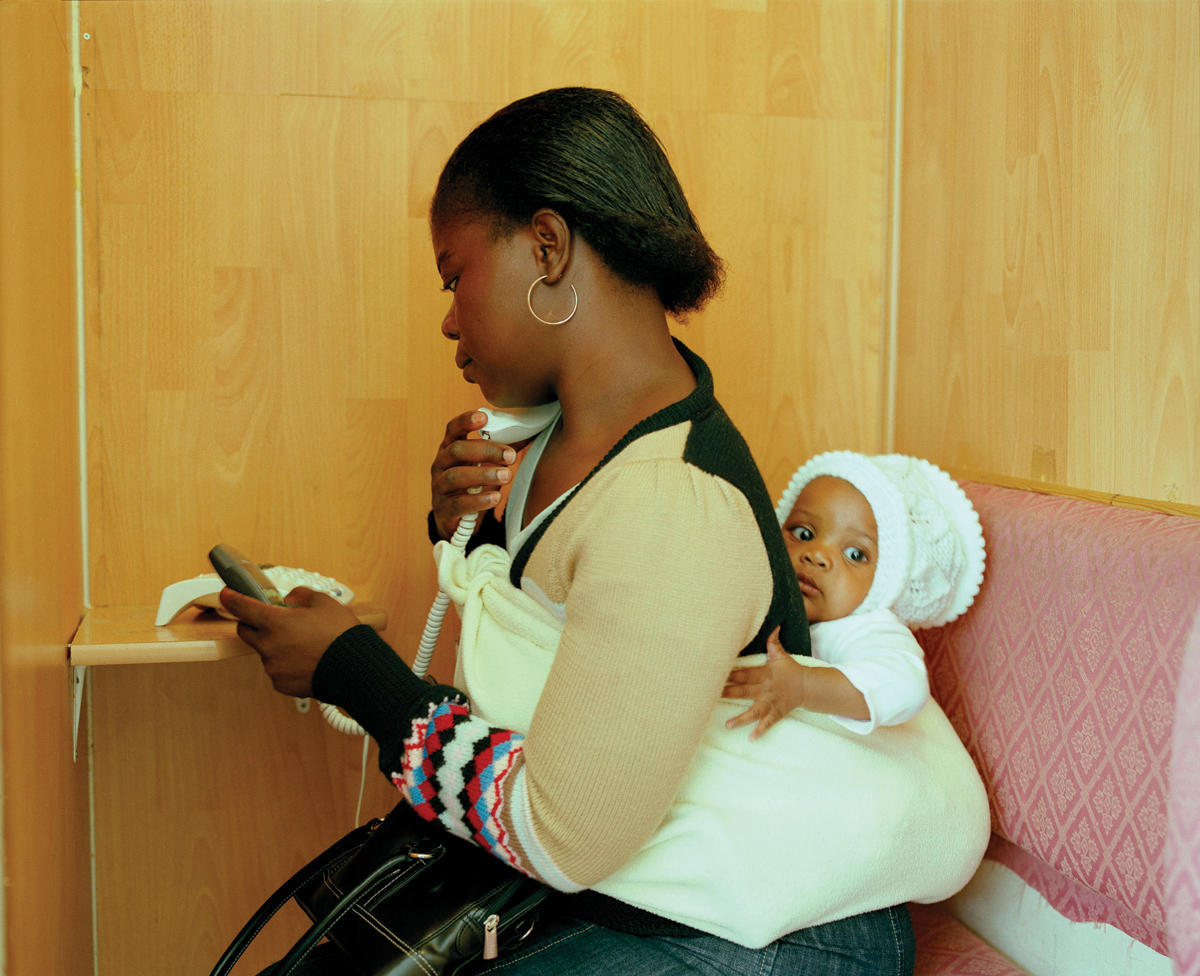
London
London is the Place for Me
Rivington Place
October 3–November 24, 2007
An impressive new addition to the fashionable Shoreditch area of East London opened its doors in October. Launch events culminated in a party that had revelers queuing in a line that stretched around the block. Multicolored lights gleaming from windows high above punctured the lattice-structured facade of the black concrete building, one of the first visual arts centers to be created by architect David Adjaye and his design team. At a cost of £8 million, funded jointly by Arts Council England, Barclays Bank, and other corporate donors, Rivington Place is home to two London-based arts organizations, the Institute of International Visual Arts (Iniva) and Autograph ABP (the Association of Black Photographers), which existed previously as gallery-less agencies.
Rivington Place has been seven years in the pipeline, but the history that brought Iniva and Autograph into being goes back to the desire to establish a permanent base for the black arts movement in the 1980s. The opening of the new building is as much about that history as it is about the future of diaspora arts and artists in the capital.
While Autograph ABP has occupied a critical place in visual culture and cultural studies, in part because of its links with photojournalism, Iniva has arguably occupied a more compromised position. The organization emerged from the black arts movement of the 80s but was founded on the promise that it would not position itself as a “black art gallery,” as 198 Gallery in Brixton had done. Its place in the London art world has not always been clear, but the organization now finds its identity occasionally contested, particularly given the art market’s flirtation with identity and difference and the increasingly globalized and decentralized nature of the art world.
From the vantage of the twenty-first century, Iniva’s name appears problematic: what does its internationalism stand for now, particularly given the global success of Tate Modern, the Frieze Art Fair, and the London art market in general, plus the birth of other centers linking the local with the global, such as the Rich Mix Cultural Foundation? In the immediate post-war era of mass migration, the presence in London of artists as diverse as Francis Newton de Souza from India, Rasheed Araeen from Pakistan, Aubrey Williams from Guyana, Roland Moody from Jamaica, and Gavin Jantjes from South Africa punctured the otherwise suffocating parochialism of an English art world that played second fiddle to theater and opera. As Kobena Mercer recently pointed out, in contrast to cities such as Paris, Berlin, and New York, international modernism seemed to hit only Britain, particularly London, in 2000 with the opening of Tate Modern. The nature of Iniva’s problematic identity is significant as a symptom of the problematic place of internationalism in twentieth-century English cultural politics.
Perhaps it is no accident, then, that Iniva’s greatest success to date, as a consultancy and agency, has been in publishing Annotations, a series of books devoted to artists engaged with questions of difference. Without this series, there might be no creative “running room” for artists to question the place from which difference has been and might continue to be articulated.
Rivington Place’s launch exhibition, ‘London is the Place for Me,’ jointly curated by Iniva and Autograph, attempted to engage with this dialectic. The Barclays Project Space was reserved for Dinu Li’s series of photographs of recent migrants calling home in commercial phone booths. Press The Star Then Say Hello was inspired by Samuel Selvon’s novel The Lonely Londoners (1956) but actually placed more emphasis on a form of portraiture than on the connections between these people and the spaces of London as a city of dreams and myths, as was suggested by the publicity material.
The calypso poet Lord Kitchener’s song that forms the title of the exhibition became mournful seen in the light of the moving image work shown in the blacked-out space upstairs: Mona Hatoum’s Measures of Distance (1988), Keith Piper’s Go West Young Man (1996), and Harold Offeh’s Alien at Large, Oxford (2001) were familiar meditations on the idea of home as a contested condition, but this project exhibition signalled an important shift.
In conversation, Stuart Hall, chairman of Iniva, suggested that there is great potential in providing visibility for artists who remain outside the canon — by curating a retrospective of Frank Bowlings’s paintings, the visibility of pre-1990s black British artists is extended. This is necessary and laudable. But Iniva’s greatest strength arguably lies in its potential to show, for example, Birmingham-based artists such as Barbara Walker or Andrew Jackson alongside canonical names like Steve McQueen, Isaac Julien, and, from the US, the likes of Ellen Gallagher and David Hammons. Its strength, in other words, is its potential to act as a zone that straddles the local and the global within the diaspora experience.